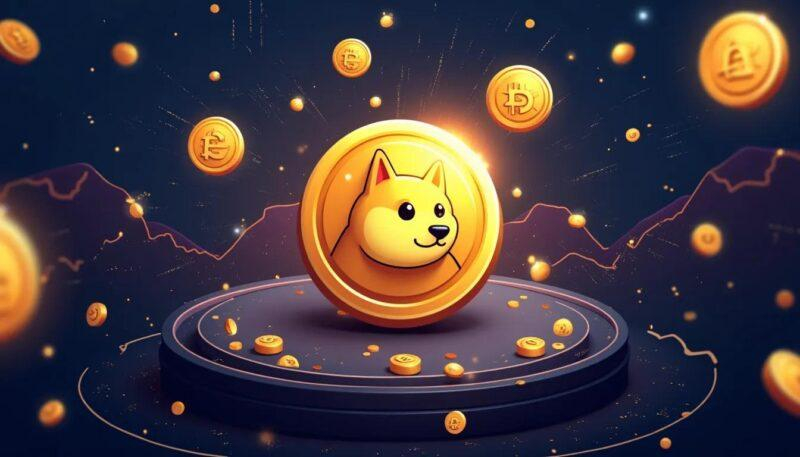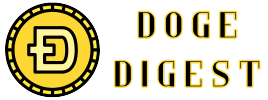In a world increasingly dominated by digital currencies, one particular cryptocurrency has captured the attention of both seasoned investors and newcomers alike. Dogecoin, with its origins rooted in a popular internet meme, has gained a significant following and proven to be more than just a passing trend. However, understanding the inner workings of its blockchain can be a daunting task for many. Fear not, as we delve into unraveling the complexities of the Dogecoin blockchain in a clear and concise manner. Join us on a journey through the digital realm of Dogecoin, where transparency and simplicity are key.
Understanding the Basics of Dogecoin Blockchain
So, what exactly is the Dogecoin blockchain? In simple terms, it is a decentralized digital ledger that records all transactions made with Dogecoin, a popular cryptocurrency that started as a meme. This blockchain is maintained by a network of computers known as nodes, which work together to validate and process transactions.
- The Dogecoin blockchain uses a consensus algorithm called Proof of Work, similar to Bitcoin, where miners solve complex mathematical puzzles to add new blocks to the chain.
- Each block on the Dogecoin blockchain contains a list of transactions, a timestamp, and a reference to the previous block, creating a secure and transparent record of all transactions.
- Unlike traditional banking systems, the Dogecoin blockchain operates 24/7, making it accessible to anyone with an internet connection, without the need for intermediaries.
One of the key features of the Dogecoin blockchain is its fast transaction speeds and low fees, making it ideal for everyday use and microtransactions. Additionally, the blockchain is public and immutable, meaning that once a transaction is confirmed, it cannot be altered or deleted. This level of transparency and security has made Dogecoin a popular choice for both individual users and businesses looking for a reliable digital payment solution.
The Mechanics Behind Dogecoin Transactions
The heart of Dogecoin transactions lies in the blockchain, a decentralized ledger that records all transactions made with the cryptocurrency. Each transaction is stored in a block, which is then added to the chain in a chronological order. This ensures transparency and security in every Dogecoin transaction.
When a Dogecoin user initiates a transaction, it is broadcasted to the network of nodes (computers) for verification. Through a process called mining, these nodes compete to validate the transaction by solving complex mathematical puzzles. The first node to solve the puzzle adds the block to the blockchain, thus confirming the transaction.
One key feature of Dogecoin transactions is their speed and low fees. Unlike traditional banking systems that can take days to process transactions, Dogecoin transactions are typically confirmed within a few minutes. Additionally, the fees for sending Dogecoin are significantly lower compared to traditional banking fees, making it an attractive option for users worldwide.
Exploring the Security Features of Dogecoin Blockchain
is crucial to understanding the robustness of this popular cryptocurrency. One of the key security features of Dogecoin is its utilization of the Scrypt algorithm for mining. This algorithm encrypts transactions on the blockchain, making it more secure and resistant to hacking attempts.
In addition to the Scrypt algorithm, Dogecoin also implements a network of nodes that work together to verify transactions and secure the blockchain. These nodes communicate with each other to reach a consensus on the validity of each transaction, ensuring that no single entity can manipulate the system. This decentralized network adds an extra layer of security to Dogecoin.
Furthermore, Dogecoin utilizes a system of public and private keys to authenticate transactions on the blockchain. Each user is assigned a unique pair of keys, with the private key being used to sign transactions and the public key used to verify the signature. This cryptographic process ensures the security and integrity of transactions on the Dogecoin blockchain. With these advanced security features in place, Dogecoin continues to gain popularity as a secure and reliable cryptocurrency.
Tips for Navigating the Dogecoin Blockchain Effectively
Understanding the Dogecoin blockchain can be a daunting task, but with the right tips and guidance, you can navigate it effectively. One tip is to familiarize yourself with the concept of blocks, which are essentially a chain of transaction records. Each block contains a list of recent transactions, a reference to the previous block, and a timestamp. By following these blocks, you can trace the history of Dogecoin transactions.
Another important tip is to keep track of the latest block height, which represents the total number of blocks in the Dogecoin blockchain. By checking the current block height, you can ensure that you are viewing the most up-to-date information on the blockchain. This can help you stay informed about the latest transactions and developments in the Dogecoin network.
Lastly, consider using block explorers to explore the Dogecoin blockchain more efficiently. Block explorers are online tools that allow you to search for specific transactions, addresses, or blocks on the blockchain. They provide detailed information about each transaction, including the amount transferred, the sender and recipient addresses, and the transaction fee. By utilizing block explorers, you can gain a deeper understanding of the Dogecoin blockchain and track your own transactions more effectively.
Potential Future Developments in Dogecoin Blockchain Technology
The world of cryptocurrency is constantly evolving, and Dogecoin is no exception. As developers look towards the future of the Dogecoin blockchain, there are several exciting possibilities on the horizon.
One potential development is the implementation of smart contracts, which would allow for self-executing contracts with the terms of the agreement directly written into code. This could revolutionize the way transactions are conducted on the Dogecoin network, making them more secure and efficient.
Another exciting possibility is the integration of privacy features, such as zk-SNARKs. This technology would allow for fully anonymous transactions on the Dogecoin blockchain, giving users an added layer of privacy and security when making transactions.
Furthermore, there is potential for scalability improvements on the network. By increasing the block size or implementing layer 2 solutions, such as the Lightning Network, Dogecoin could handle a higher volume of transactions with lower fees and faster confirmation times.
With these potential future developments, the Dogecoin blockchain has the opportunity to become even more robust and versatile, cementing its place as a leading cryptocurrency in the digital world.
Q&A
Q: What is a blockchain and how does it relate to Dogecoin?
A: A blockchain is a decentralized digital ledger that records transactions across a network of computers. Dogecoin, like other cryptocurrencies, relies on a blockchain to securely store transaction data.
Q: How does the Dogecoin blockchain work?
A: The Dogecoin blockchain is a series of blocks containing transaction data. Miners validate these transactions by solving complex mathematical problems, which adds a new block to the chain. This process ensures the integrity and security of the Dogecoin network.
Q: What makes Dogecoin’s blockchain unique?
A: One unique aspect of Dogecoin’s blockchain is its low transaction fees and fast block times. This makes it ideal for quick and inexpensive transactions, reflecting the fun and lighthearted nature of the Dogecoin community.
Q: How can individuals explore the Dogecoin blockchain?
A: Interested individuals can explore the Dogecoin blockchain through various blockchain explorers, which provide a user-friendly interface to view transaction history, network statistics, and other relevant data.
Q: What are the potential benefits of understanding the Dogecoin blockchain?
A: Understanding the Dogecoin blockchain can empower individuals to make informed decisions about their investments and transactions. It can also help foster a deeper appreciation for the technology and innovation behind cryptocurrencies.
Concluding Remarks
In conclusion, the Dogecoin blockchain may seem complex at first glance, but with a little unraveling, its inner workings become clearer. By understanding the decentralized ledger that powers this popular cryptocurrency, we can appreciate the innovative technology that underpins its transactions. As Dogecoin continues to gain traction in the crypto world, unraveling its blockchain will become even more important for those seeking to navigate the digital currency landscape. So, next time you send or receive Dogecoin, remember the intricate web of blocks and transactions that make it all possible. Happy unraveling!






